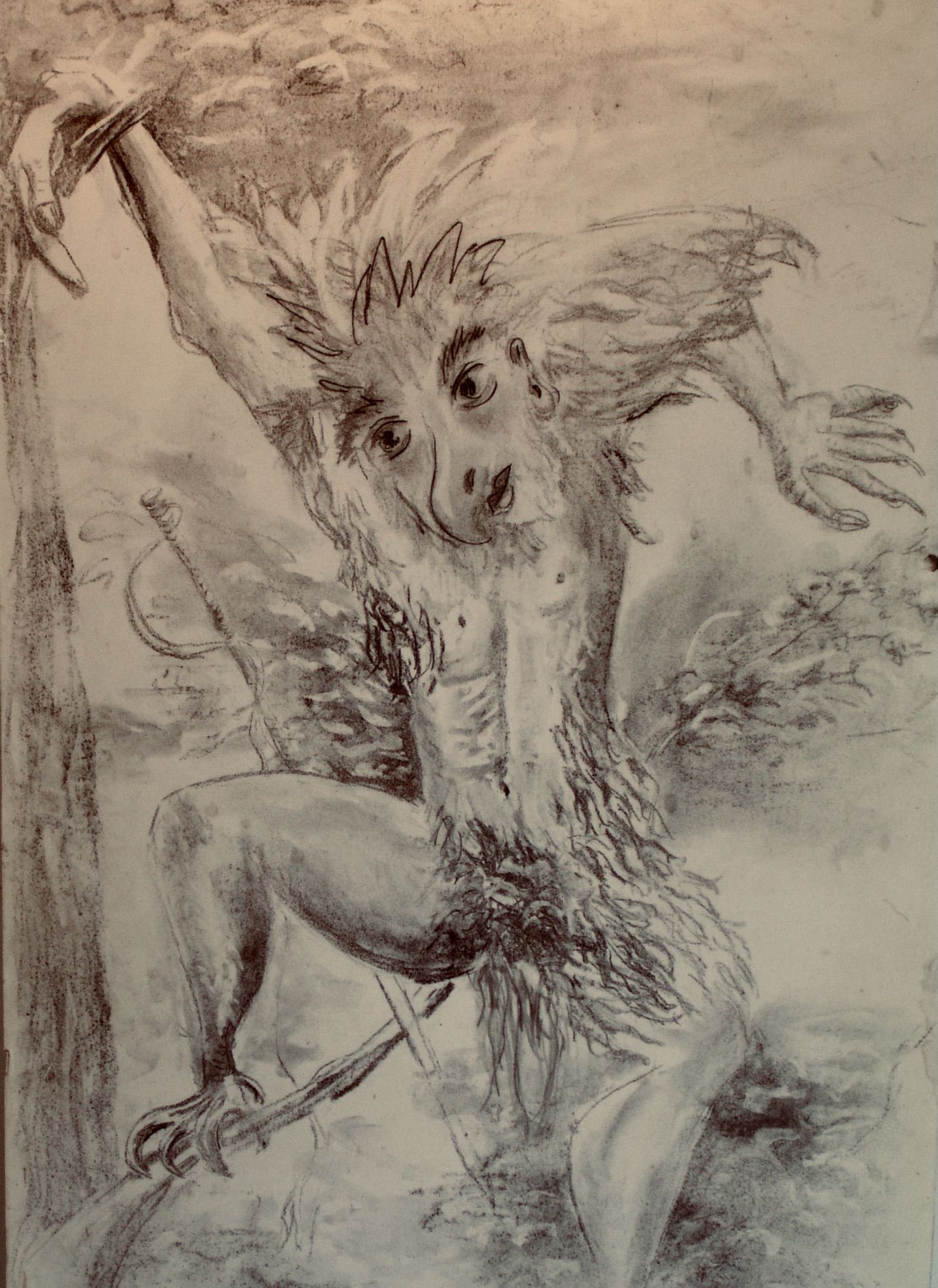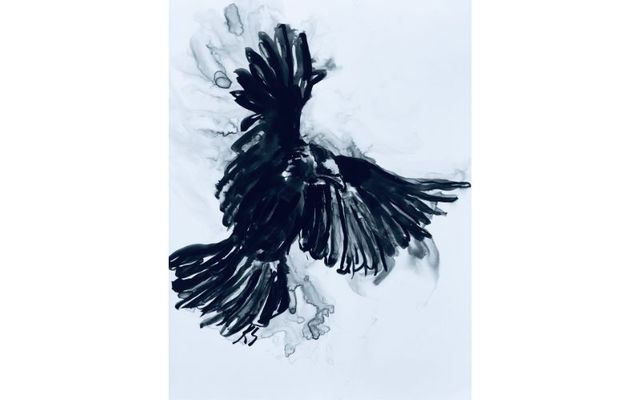Several years ago, I was asked to write a few pagan songs for a winter solstice celebration in Boston. Nothing like a nice little pagan assignment, I thought - something about nature, or drinking, or sex. Horace? Ovid? Catullus?
Shortly after that, I had the opportunity to visit some of Ireland’s great stone circles and dolmens. I stood on those barren expanses with great slabs of granite propped towards the sky and thought it miraculous that I was sharing this vast domain of rock and sky with my druid ancestors. Only time separated our experience.
"These songs need to be Irish," I thought.
The tale of King Sweeney dates to the Battle of Moira, in 637AD. It seems a certain Ronan Finn, a holy and distinguished cleric became infuriated by Sweeney’s bad behavior (Sweeney had thrown Ronan’s hymnal into the lake). The cleric cursed Sweeney and turned him into a bird banishing him to roam to desolate crags of the north country, naked and isolated.
Sweeney rails and roosts in Medieval Ireland -- a whinging and angry spokesman for the stubborn Celts holding out against a rising Christian ethos. He’s a renegade who is prone to losing his temper. He flies off the handle and pays dearly for his impulsiveness and lawlessness. But then the rabble-rouser turns on himself and becomes the philosopher, the observer, a man set adrift from all known places, isolated. He loses his home, his wife, his friends and is forced into bitter self-examination.
That led me to Seamus Heaney and his translation of "Buile Suibhne", or "Sweeney Astray". The poem had elements of fury, malediction, transformation, sorrow, contrition, contemplation, and resurrection. In Sweeney’s "Praise of the Trees of Ireland", I found my entering spot. There is a hierarchy of trees in Irish lore. We are, each one of us, assigned to a tree at birth.
I decided to create a Greek chorus of trees.
Here is Seamus Heaney’s rich translation of the description of Sweeney’s transformation.
(I used Heaney’s translation. I wrote to him and he wrote back to suggest I get permission. His letters to me are another treasure!)
His brain convulsed,
his mind split open.
Vertigo, hysteria, lurchings
and launchings came over him,
he staggered and flapped desperately,
he was revolted by the thought of known places
and dreamed strange migrations.
His fingers stiffened,
his feet scuffled and flurried,
his heart was startled,
his senses were mesmerized,
his sight was bent,
the weapons fell from his hands
and he levitated in a frantic cumbersome motion
like a bird of the air.
And Ronan’s curse was fulfilled.
This tale was originally told over a campfire by the seanchaí, the storyteller, around 637AD, in the age of the Irish kings.
There was no illustration anywhere of mad King Sweeney, so I taped a long piece of paper up on my wall and went mad with a stick of charcoal, drawing Sweeney being transformed into a bird.

I then set the tree verses to music for chorus and chamber orchestra – the oak, the aspen, the yew, the rowan, etc. I also found me a baritone to sing Sweeney.
Listen to some excerpts here:
The notion of metamorphosis has captivated the imagination forever. From the dramatic physical transformations of Ovid or Kafka to the more subtle psychological changes of Proust or Joyce, we all hold out for the possibility of miraculous human re-creation and resurrection. But as Sweeney’s cautionary tale demonstrates, such change does not occur without costly suffering and poignant loss and no one in their right mind would enter into it willingly. It takes a curse, an existential crisis.
I am fascinated by these crucial turning points in our lives.
His brain convulsed, his mind split open.
Moments of great personal change are moments filled with tremendous feelings of disorientation. We dance dangerously close to schizophrenia. Our sense of up and down, right and wrong is jostled. Our brain is traumatized.
Vertigo, hysteria, lurchings and launchings came over him,
he staggered and flapped desperately,
We lose the sense of control we all so carefully cultivate in our lives. A control that is necessary to maintain equilibrium and yet, in order to grow, we need occasionally to relinquish sanity. Most of us don’t have the courage to do that voluntarily. There is a desperation about it that frightens and chases away family and friends. At that moment of transformation, we are truly alone.
He was revolted by the thought of known places
and dreamed strange migrations.

Love Irish history? Share your favorite stories with other history buffs in the IrishCentral History Facebook group.
At these moments, life as it existed until that moment becomes suspect, and becomes the enemy of growth. There is a deep urge to move, in spite of the terror, into something new, something unknown. And these metamorphoses are never smooth. They are cumbersome, desperate and hysterical.
I flapped around with mad King Sweeney for more than a year. He accompanied me through my own metamorphosis. I give thanks to him from my perch in a yew tree.
*Kate Sullivan likes to play around with words, music, and pictures. She has written and illustrated children’s books, sung chansons at NYC Mme Tussaud’s Wax Museum, and her ‘Fugitum est’ was performed at Carnegie Hall by The Kremlin Chamber Orchestra as part of their tribute to Mozart. She also likes to paint ostriches and plays the musical saw to impress people. Her poems and paintings have appeared in many literary magazines. For more information, visit SullyArts.substack.com or SullyArts.com.
This article was submitted to the IrishCentral contributors network by a member of the global Irish community. To become an IrishCentral contributor click here.




Comments